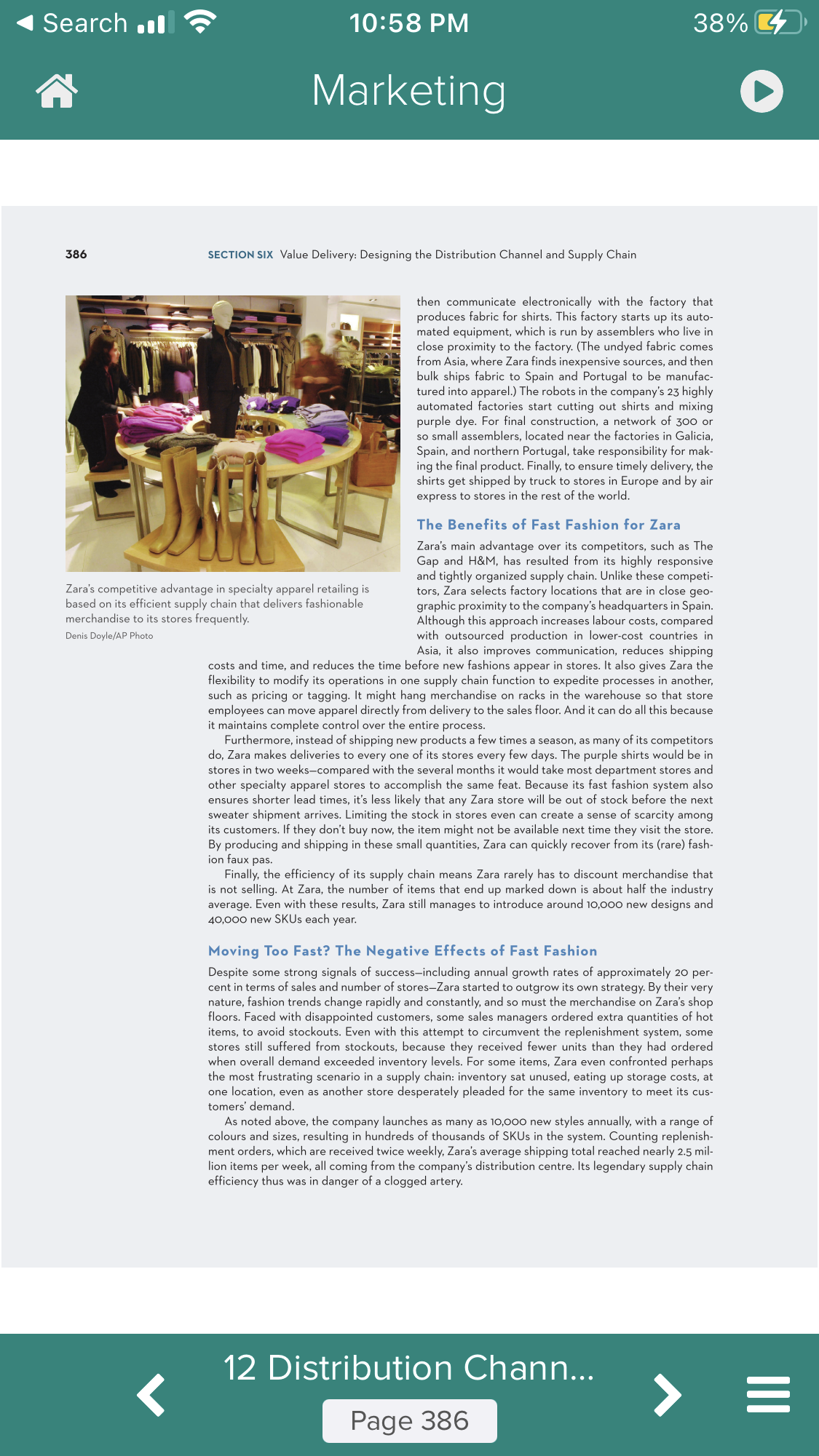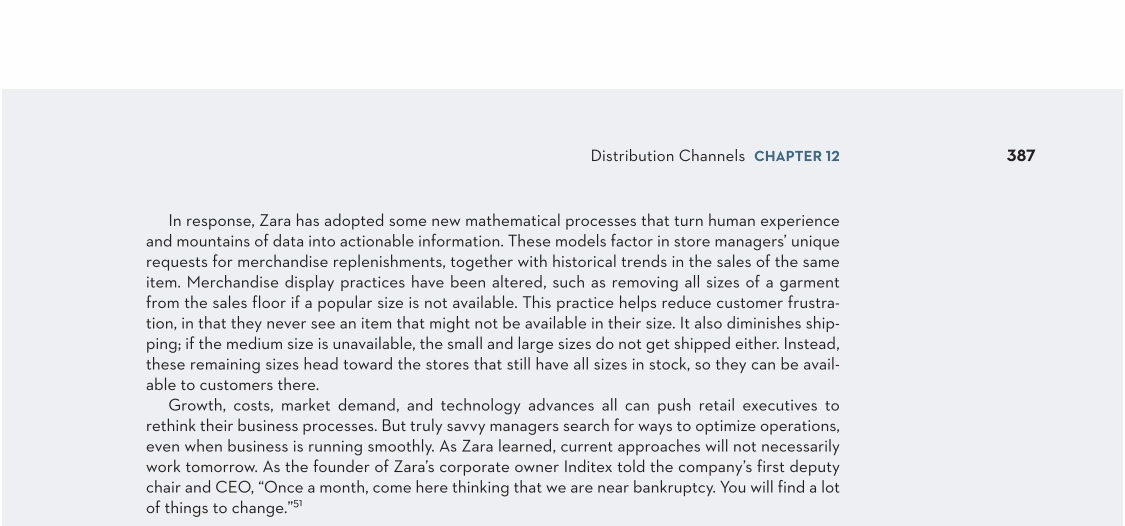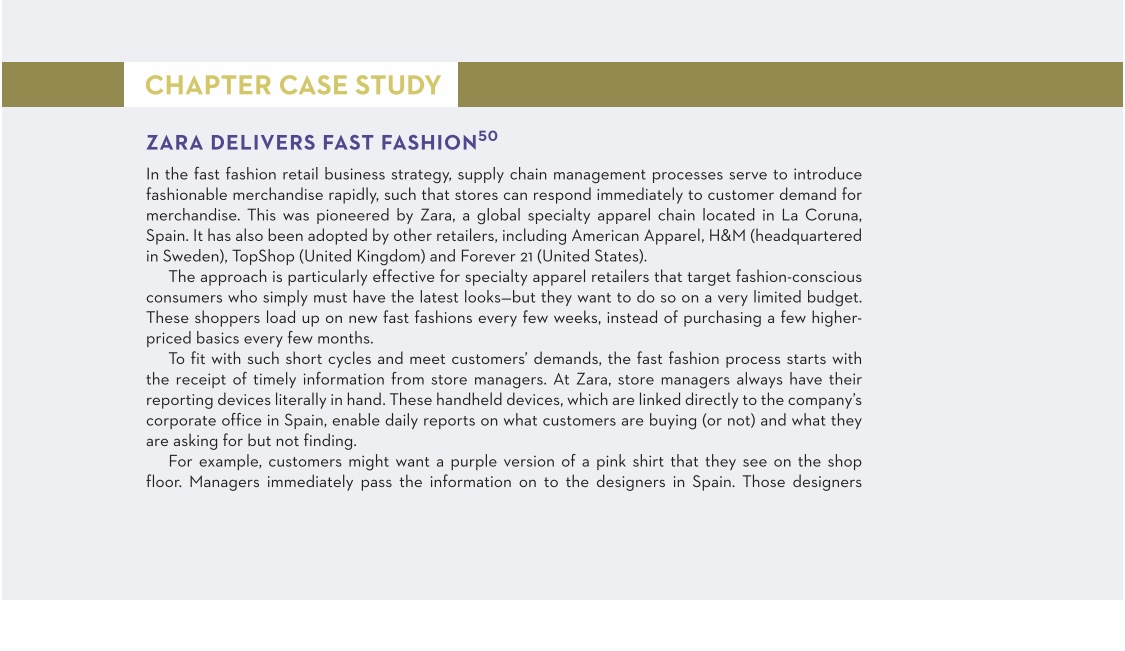1. How does an individual firm like Zara manage a supply chain? How does it get new products from design to store so quickly?
2. What are some of the ways that Zara's supply chain management system has helped create value for its customers? Provide specific examples.
3. What challenges did Zara's focus on supply chain efficiency create? Are all such systems destined to suffer such growing pains
\fDistribution Channels CHAPTER 12 In response. Zara has adopted some new mathematical processes that turn human experience and mountains of data into actionable information. These models factor in store managers' unique requests for merchandise replenishments. together with historical trends in the sales of the same item. Merchandise display practices have been alteredr such as removing al! sizes of a garment from the sales fioor if a popular size is not available. This practice helps reduce customer frustra- tion, in that they never see an item that might not be available in their size. It also diminishes ship ping; if the medium size is unavailable. the small and large sizes do not get shipped either. Instead. these remaining sizes head toward the stores that still have all sizes in stock. so they can be avail able to customers there. Growth, costs, market demand, and technology advances all can push retail executives to rethink their business processes. But truly savvy managers search for ways to optimize operations. even when business is running smoothly. As Zara learned, current approaches will not necessarily work tomorrow. As the founder of Zara's corporate owner Inditex told the company's first deputy chair and CEO, \"Once a monthr come here thinking that we are near bankruptcy. You will find a lot of things to change."5' 387 ZARA DELIVERS FAST FASHION\" In the fast fashion retail business strategy. supply chain management processes serve to introduce fashionable merchandise rapidly, such that stores can respond immediately to customer demand for merchandise. This was pioneered by Zara, a global specialty apparel chain located in La Coruna, Spain. It has also been adopted by other retailers. including American Apparel. H&M (headquartered in Sweden). TopShop (United Kingdom) and Forever 21 (United States]. The approach is particularly effective for specialty apparel retailers that target fashion-conscious consumers who simply must have the latest looksbut they want to do so on a very limited budget. These shoppers load up on new fast fashions every few weeks, instead of purchasing a few higher- priced basics every few months. To fit with such short cycles and meet customers' demands. the fast fashion process starts with the receipt of timely information from store managers. At Zarar store managers always have their reporting devices literally in hand. These handheld devices. which are linked directly to the company's corporate office in Spain, enable daily reports on what customers are buying (or not) and what they are asking for but not finding. For example, customers might want a purple version of a pink shirt that they see on the shop floor. Managers immediately pass the information on to the designers in Spain. Those designers









